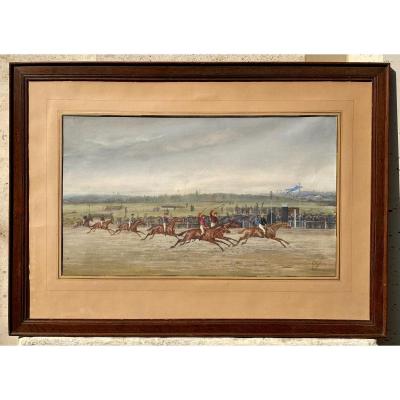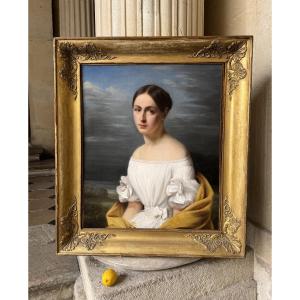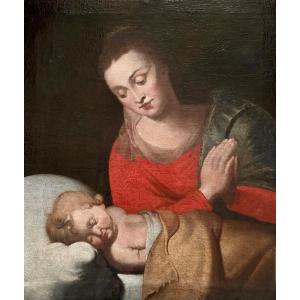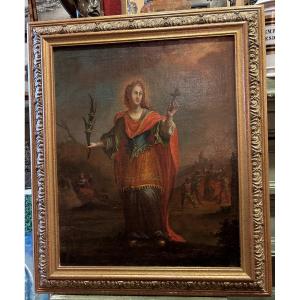On the right, a gigantic conical furnace spews bright red flames. Inside, the three young Hebrews — Shadrach, Meshach, and Abednego — are shown standing, smiling, and miraculously untouched by the fire, accompanied by a luminous figure — an angel or divine apparition. Outside, two soldiers are thrown to the ground, as if struck down by divine power and fire.On the left, a central figure dressed in a richly adorned ermine cloak and wearing a turban gestures authoritatively toward the scene: this is Nebuchadnezzar, king of Babylon, surrounded by guards. One of them bows before him in an attitude of fear and obedience.The king of Babylon, stunned by the miracle unfolding before his eyes, spoke and said:
“Shadrach, Meshach, and Abednego, servants of the Most High God, come out! Come here!” And Shadrach, Meshach, and Abednego came out from the midst of the fire.
The satraps, prefects, governors, and royal advisers gathered around. They saw that the fire had no power over the bodies of these men; not a hair of their heads was singed, their trousers were not harmed, and there was no smell of fire on them.
Then Nebuchadnezzar said: “Blessed be the God of Shadrach, Meshach, and Abednego, who sent his angel and delivered his servants who trusted in him! They defied the king’s command and were willing to give up their lives rather than serve or worship any god except their own God.
Therefore I make this decree: any people, nation, or language that speaks against the God of Shadrach, Meshach, and Abednego shall be torn limb from limb and their houses laid in ruins, for there is no other god who is able to deliver in this way.
Then the king promoted Shadrach, Meshach, and Abednego in the province of Babylon.”This narrative illustrates steadfast faith and fidelity in the face of persecution. Widely popular in 18th-century illustrated catechisms and religious theatre, it symbolises divine protection of the innocent and the triumph of faith over idolatry.
The spectacular composition, theatrical treatment of the narrative, and bold colours evoke works intended for popular devotion or small private chapels.
The reverse glass painting technique was mainly practiced in Southern Germany, Austria, Bohemia, and northern Italy between the late 17th and early 19th centuries. Each detail was painted in reverse order — starting with the finest highlights — and then viewed through the glass.
The moulded frame in ebonised wood, adorned with a row of gilt acanthus leaves, is later in date.Very good overall condition for this type of object. Minor wear in places.Dimensions with frame: 55 x 37 cm






















 Le Magazine de PROANTIC
Le Magazine de PROANTIC TRÉSORS Magazine
TRÉSORS Magazine Rivista Artiquariato
Rivista Artiquariato
